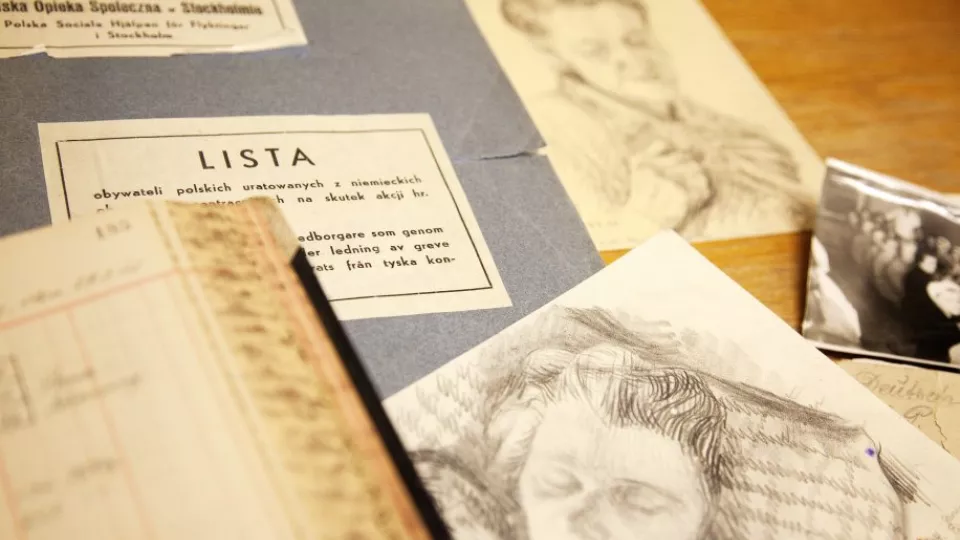Saturday 27 January is international Holocaust Remembrance Day. Just over three months have passed since the Ravensbrück Archive in Lund was made accessible to all online. During World War II, Ravensbrück was a concentration camp mainly used to imprison women and children. Over the course of the war, over 130 000 prisoners were held there.
In spring 1945, with the help of Folke Bernadotte’s White Buses, the Red Cross rescued around 20 000 prisoners who were taken to Sweden and Denmark. The archive contains 500 in-depth interviews with survivors, conducted soon after their arrival in Sweden. Most of them came from Ravensbrück, but many had also been imprisoned in other concentration camps. Besides the interviews, the archive consists of photographs, notebooks, personal belongings and lists of names from the camp.
On 20 October 2016, the web portal was opened to both researchers and private individuals searching for information about their relatives. Håkan Håkansson at Lund University Library works with the archive.
The visitors to the portal – can you say anything about them?
“Unfortunately not, as the only data we can retrieve from our statistics is the number of visitors and users of the portal. But just over 6000 visitors have accessed the archive since it opened, or almost 100 per day, which is an unexpectedly high number considering the content.”
Can you provide a few examples of where the requests originate and what they are about?
“The queries come from both academic researchers and private individuals, in the latter case often people whose relatives were interned in the concentration camps and who hope to find information about their fate. As the archive is so large, we have only been able to make parts of it accessible in digital form, and many people wonder whether there might be further information in the as yet undigitised parts. We have often been able to help them with this. The queries have come from Sweden, Norway, Poland, Germany, France, the Netherlands, the USA and other countries.”
Is there any particular query that stands out?
“Each query is unique, often completely unexpected and sometimes quite overwhelming – as when a survivor’s relative got in touch a few weeks ago wondering whether we wanted more material for the archive: the prisoner’s uniform that her mother wore during her years in the concentration camp. Of course we accepted the offer, because it is important to preserve everything that reflects the life of inmates in the concentration camps.”
How do the recent months reflect the significance of the archive now being open to the public?
“To be honest, we are rather moved by the attention the archive has received. From being virtually unknown, it is now the absolutely most consulted archive we have at the University Library. It is incredibly gratifying that so many people use the material and that we are able to contribute to keeping knowledge of the Holocaust alive, at a time when it is more necessary than ever.”
